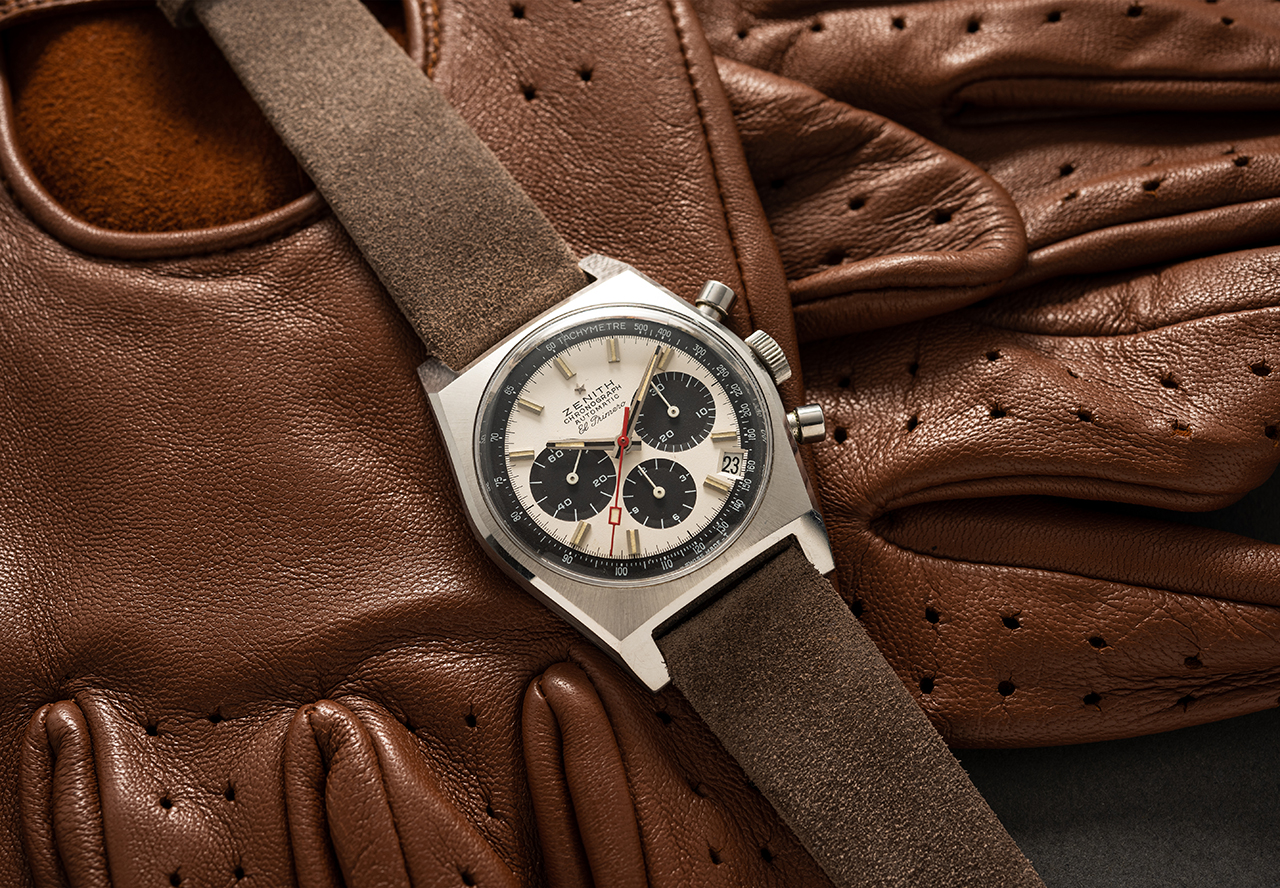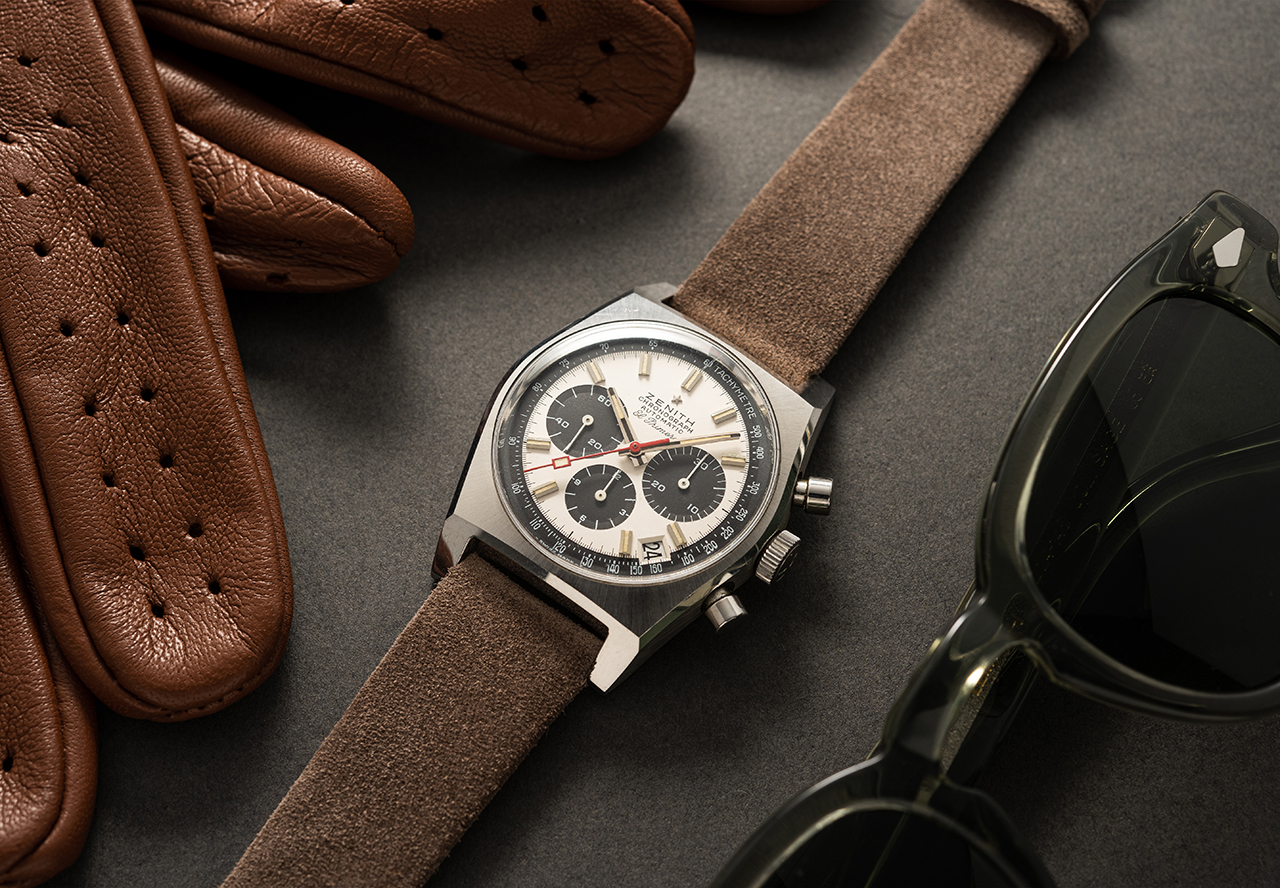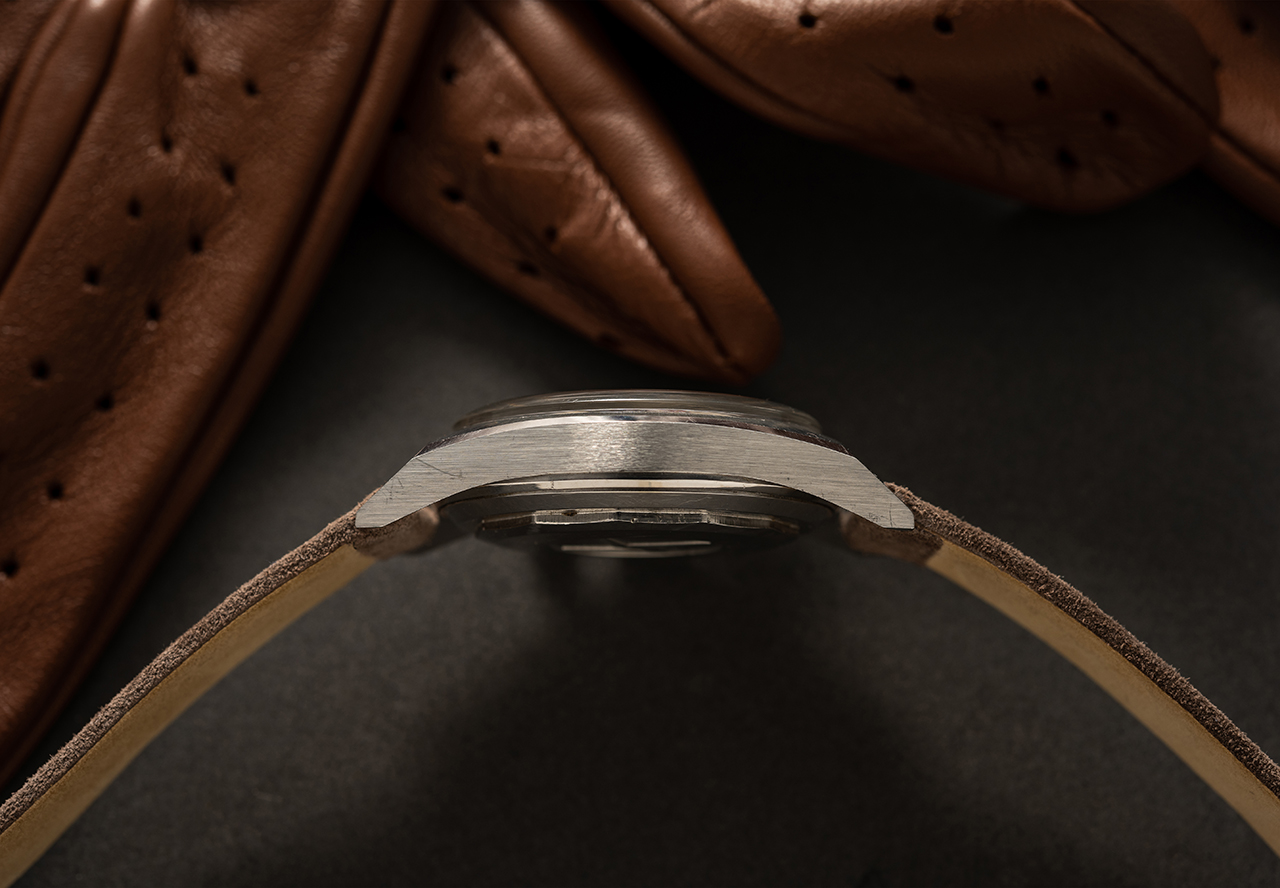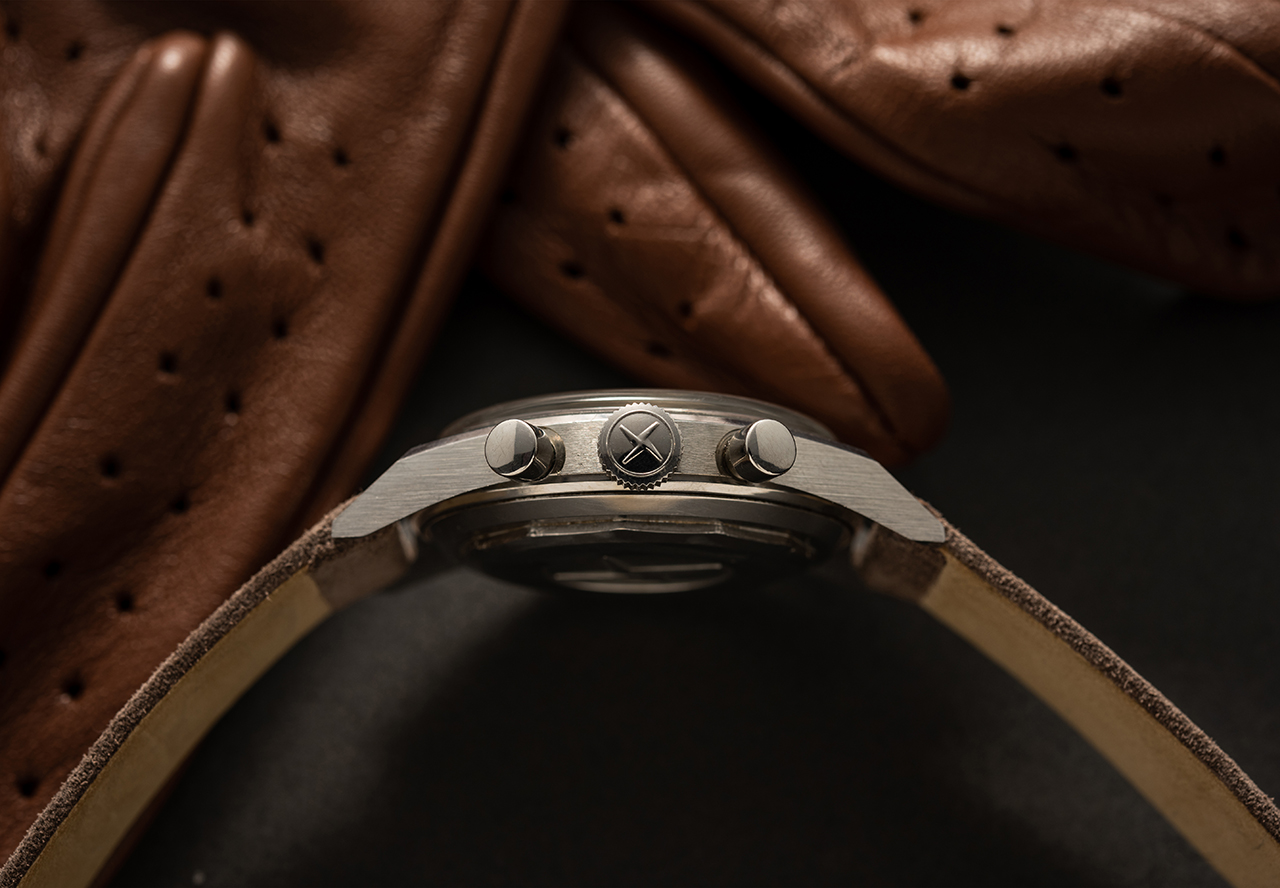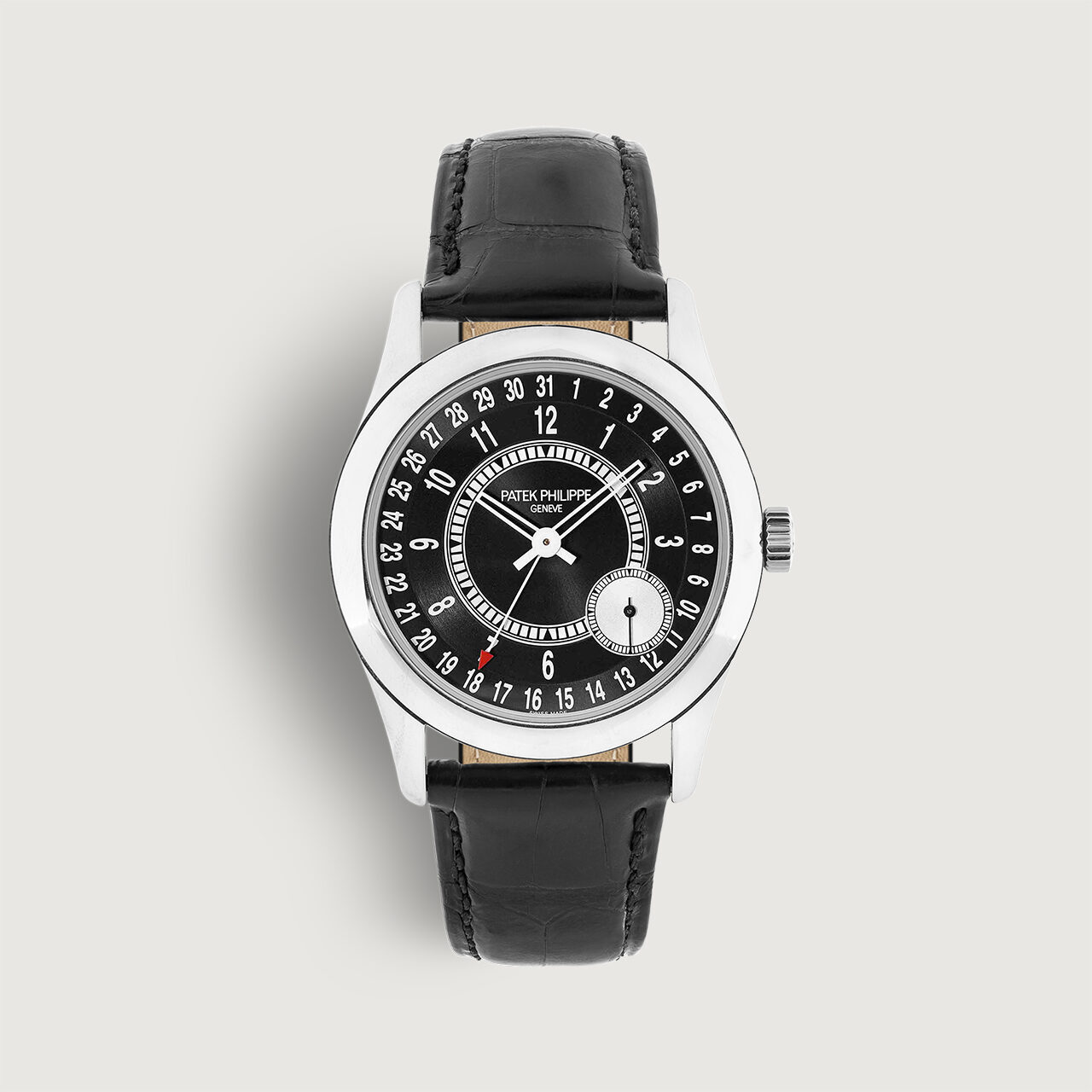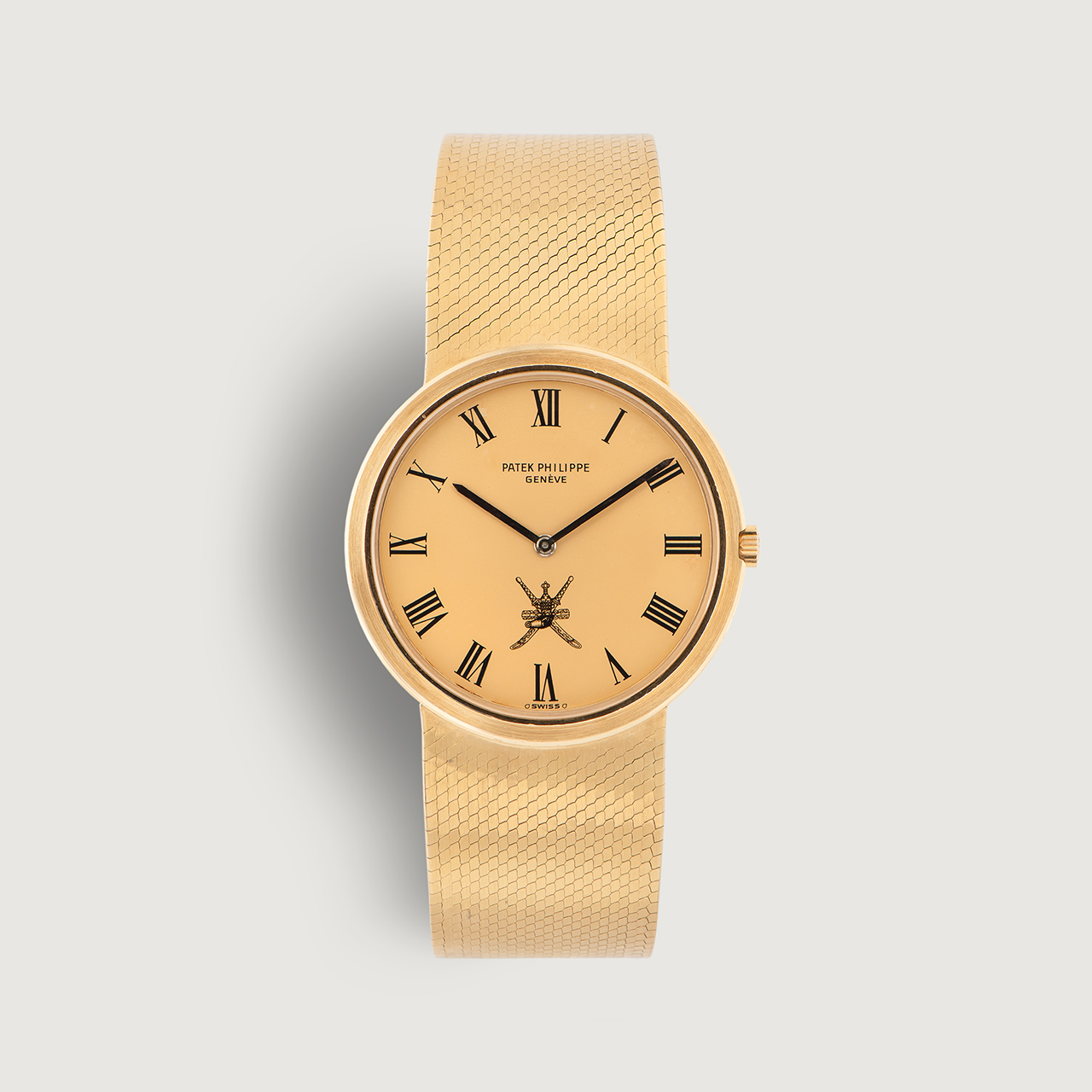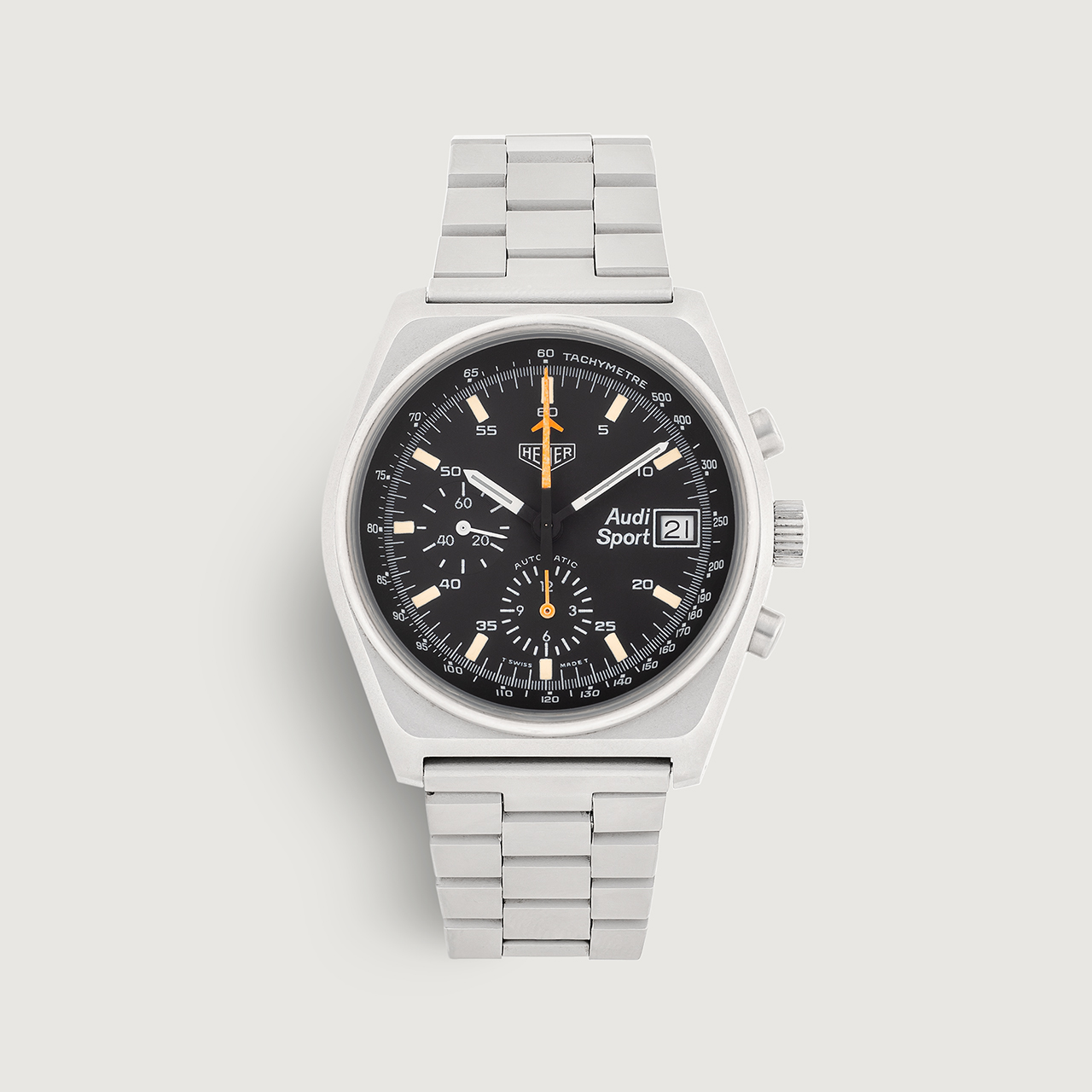1970s Zenith El Primero A384
SOLD
Out of stock
DETAILS
Amongst the most collectable El Primero models produced thanks to its rarity, iconic design and historical provenance, the Zenith El Primero A384 is a watch we enjoy having in our possession. Featuring its original “panda” dial in excellent condition, this timepiece evokes the late 60s / early 70s period of watch design. Its 37mm tonneau case appears unpolished and features its original crown and chronograph pushers. The case back shows some signs of use however overall the condition of the watch surpasses what you would expect for a watch of +50 years of age. The A384 houses Zenith’s legendary automatic cal. 3019 PHC chronograph movement which is fully functioning and keeping excellent time.
Overall this is one of the best original examples you are likely to find. Zeniths successful re-edition of this model together with the growth of the second-generation Rolex ‘Zenith’ Daytona’s popularity, means these watches are now beginning to receive the attention they deserve after being underrated for many years.
| LOCATION | London – UK |
|---|---|
| BRAND | Zenith |
| MODEL | El Primero |
| YEAR | Circa 1971 |
| REFERENCE | A384 |
| MATERIAL | Stainless Steel |
| MOVEMENT | 3019 PHC |
| CASE DIAMETER | 37mm |
| BRACELET/STRAP | JPM Suede |
| BOX/PAPERWORK | Watches of Knightsbridge |
STORY BEHIND
Zenith and the El Primero’s History
Founded in 1865, Zenith has been known for their precise timepieces and incredibly accurate movements for quite some time. Having won thousands of prizes for the accuracy of their timepieces, instruments and pocket watches, the brand’s growth has primarily been tied to the prowess of their movements. Fuelled by their rapid growth and dominance as a watchmaking powerhouse, Zenith was an early innovator in the race to create the first automatic chronograph in history. Originally intending to release the movement in 1965 to celebrate the company’s centenary year, the movement wasn’t completed until 1969, requiring seven years of research and development.
Unhappy to put out a lacklustre movement, the El Primero was not delayed due to Zenith’s inability. Instead, Zenith’s lengthy list of requirements for the movement was what delayed them. Some of these requirements included fully integrating the chronograph function within the movement (as opposed to a chronograph module), having a very high beat rate (36,000 vibrations per hour), being able to measure 1/10th of a second and a date function. Released in 1969 as the “El Primero”, Zenith’s creation has become one of the most iconic movements in all of watchmaking. Few other movements, if any, have a name as ubiquitous as most watch collections.
While the El Primero movement was announced on January 10th of 1969, it wasn’t available in watches until September. This meant competitors, like Seiko and the Chronomatic Group (a consortium of various brands like Heuer and Breitling), got to release and sell their automatic chronograph movements before Zenith – May and August, respectively.
The Zenith A384
With its angular tonneau case, silver dial and black sub-dials, the A384 was an immediately distinctive watch at the time. Featuring a thin polished bezel allowing a larger dial to be fit into the case and a black tachymeter scale along its dial periphery, the A384 was a feat of design prowess, just like the movement within it. Legible, functional and incredibly well-throughout, the A384 hit every nail on the head. With its short production run from 1969 to 1971, only about 3000 examples of the original A384 were ever produced. Thanks to its status as the first El Primero model to feature in a Zenith advertisement and its lower reference number than its sibling El Primero model, the A386; the A384 is said to be the very first El Primero model to have been produced. It is the model that introduced one of the most iconic movements ever made to the world and, for that, is bursting with horological heft and history.
Rolex Uses the El Primero
Released in 1988, the second generation of Daytonas are affectionately known as the ‘Zenith’ Daytonas after the movement found within them. Following Zenith’s sale to Zenith Electronics during the infamous Quartz Crisis of the 70s and 80s, the company ceased producing their El Primero movements and instructions from the board were to destroy all equipment necessary to make them, to prevent copy-cats. However, Charles Vermot (a senior Zenith engineer) decided against this policy and hid Zenith’s production notes and tooling to prevent the loss of years of hard work and one of history’s most significant movements.
After Rolex had shown an interest in using Zenith’s El Primero movement to power their new series of Daytona, Vermot showed Zenith’s executives where he had hidden the necessary equipment to make the movements. With the ability to satisfy Rolex’s needs, Zenith secured the ten-year contract to supply Rolex with their El Primero movement and ultimately supplied them to Rolex for 12 years until 2000. While the El Primero was already an iconic movement before Rolex used it, their endorsement for longer than they originally planned just goes to act as a testament to the movement’s quality.
Gay Freres and the Ladder Bracelet
As mentioned, the A384 featured a rather distinctive case design for the time. Acknowledging how unique this design was, Zenith decided to create a new bracelet design for the case. With the help of horology’s most famous specialist bracelet manufacturer Gay Frères, not only was the resulting bracelet comfortable, unique and distinctive, it also perfectly complimented the A384’s relatively avant-garde aesthetic. The bracelet Gay Frères created was an open design bracelet whereby the centre links are about half the size they would be on a conventional bracelet, thus creating gaps in the bracelet.
Called the “Ladder” bracelet, this bracelet was not only incredibly comfortable to wear thanks to its lightweight design, but it also had a dressier look than the usual metal bracelets worn at the time. As leather “Rally” straps were popular during this period, the “Ladder” bracelet proved to be quite the hit too. Like many other watchmaking brands, Zenith is very well aware of the iconic status the A384 holds within the community. As such, they released a re-edition of the A384 in 2020 that was entirely faithful to the original version, like the example we have here – even releasing it with the Gay Freres’ Ladder’ bracelet, a first in a very long time.

